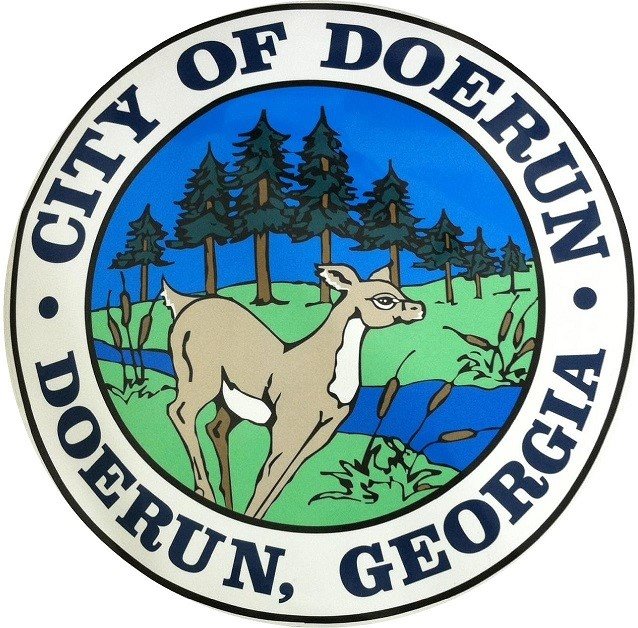EDDIE SEAGLE: Ornamental grasses bring a new perception
Published 8:00 am Wednesday, April 20, 2022

- Eddie Seagle is a Sustainability Verifier, Golf Environment Organization (Scotland), Agronomist and Horticulturalist, CSI: Seagle (Consulting Services International) LLC, Professor Emeritus and Honorary Alumnus (Abraham Baldwin Agricultural College), Distinguished Professor for Teaching and Learning (University System of Georgia) and Short Term Missionary (Heritage Church, Moultrie). Direct inquiries to csi_seagle@yahoo.com.
“There is no glory in star or blossom till looked upon by a loving eye. There is no fragrance in April breezes till breathed with joy as they wander by.” William Cullen Bryant. “Spring unlocks the flowers to paint the laughing soil.” Bishop Reginald Heber. “April is a promise that May is bound to keep.” Hal Borland. “April prepares her green traffic light and the world thinks, ‘Go.’” Christopher Morley.
When the topic of grasses comes around, so often our attention goes to lawns and mowing. But, there’s a whole different group of grasses – the ornamental kind used in the landscape beds. Ornamental grasses bring a whole new perception and definition to the landscape.
Ornamental grasses provide a variety of seasonal exhibitions throughout the year. From their vivid vegetative qualities and attractive seedhead displays during the growing season to their eye-catching dormant stage in the winter months, they offer unique characteristics and value to the landscape.
Native ornamental grasses include the following: Little Bluestem (Schizachyrium scoparium) is an awesome, tough prairie native which exhibits gray-green leaf blades that turn strong shades of purple, red, and orange in the fall season. Reaching upwards to three feet tall, it prefers full sun and well-drained soils. The value of this grass is the beautiful blue color in summer and its effective fall coloration.
Switchgrass (Panicum virgatum) is a favorite grass to many horticulturalists with its airy plumes in the late summer and fall, its blue-gray foliage during the season, and its brilliant shades of gold or red in the fall. Reaching upwards to a height of five feet, it prefers full sun or part shade and well-drained soils. The value of this grass is its beautiful fall color, shade tolerance, and wildlife goodness. Dallas Blues is an excellent cultivar.
Fiber Opticgrass (Isolepis cernua) is an unusual tender perennial which is often grown as an annual in colder climates. It brings a fine texture and a low, mounding habit on target for container gardens to our landscapes. Reaching a height of 6-inches, it prefers full sun or part shade and moist soils. The value of this grass is its unusual appearance and small space friendliness.
Northern Sea Oats (Chasmanthium latifolium) is a fast-growing species with interesting seedheads that hang from the stems like wind chimes. Reaching a height of three feet, it prefers full sun or part shade and well-drained soils. The value of this grass is its speed of growth (plant with care) and attractive fall seedheads.
Those ornamental grasses that are introduced and not native but offer sustainability characteristics include: Feather Reedgrass (Calamagrostis ‘Karl Foerster’) is a very popular ornamental grass offering a distinct upright growth habit which maintains its aesthetics throughout the winter season. Reaching a height of six feet, it prefers full sun and well-drained soils. The value of this grass is its toughness and architectural shape.
Fountaingrass (Pennisetum alopecuroides) is an attractive, mounding plant which exhibits beautiful shape and soft, feathery plumes that dance in the wind. Reaching a height of five feet, it prefers full sun and well-drained soils. The value of this grass is in its graceful, arching shape and attractive plumes
Blue Oatgrass (Helictotrichon sempervirens) is a low maintenance grass with steel-blue color and an amazing mounded habit of growth. Reaching a height of four feet, it prefers full sun and well-drained soils. The value of this grass is its attractive silvery-blue color.
Purple Millet (Pennisetum glaucum) is an extremely tough annual grass with amazing burgundy foliage and rich purple seedheads that look like fluffy cattails. These grasses are very beautiful and attract birds. Reaching a height of five feet, it prefers full sun or part shade and well-drained soils. The value of this grass is its burgundy foliage and rich purple seedheads.
Japanese Forestgrass (Hakonechloa macra) is a favorite low-growing species offering an excellent mounding growth habit. ‘Aureola’ and ‘All Gold’ are variegated selections exhibiting brightly colored foliage that work well in shady areas. Reaching a height of one foot, it prefers part shade and well-drained soils. The value of this grass is in its color attributes to brighten up shade gardens.
Maidengrass (Miscanthus sinensis) is a very common ornamental grass which is very easy to grow. Its characteristics include narrow, arching foliage (many variegated selections are available) which add color to landscapes and silvery plumes that offer captivating appearances. Reaching upward to 8-feet tall, it prefers full sun and moist, well-drained soils. The value of this grass is in its attractive plumes and elegant arching habit of growth.
Ravennagrass (Saccharum ravennae) is a gigantic, fast-growing perennial which produces tall silvery plumes making an effective impression in the fall landscape. Reaching heights of 12 feet, it prefers full sun and well-drained soils. The value of this grass is in its height and attractive plumes.
Purple Fountaingrass (Pennisetum setaceum ‘Purpureum’) is a gardening favorite exhibiting burgundy-red foliage throughout the season. It is a tender perennial and is frequently used in container gardens. Reaching a height of three feet, it prefers full sun and well-drained soils. The value of this grass is in its rich, deep purple color.
Zebragrass (Miscanthus sinensis ‘Strictus’) offers a bold color with each leaf blade featuring a series of bright yellow bands. Zebragrass offers strong focalization in the landscape with its color and upright growth habit that does well in a perennial border. Reaching a height of five feet, it prefers full sun and moist, well-drained soils. The value of this grass is its strong colors of the foliage.
Purple Moorgrass (Molinia caerulea) is an ornamental grass offering attractive, mounding foliage that turns brilliant gold in the fall. Reaching a height of five feet, it prefers full sun or part shade and moist, well-drained soils. The value of this grass is in its bold shape, effective fall color, and shade tolerance.
Hairgrass (Deschampsia cespitosa) is an evergreen, ornamental grass with airy plumes in shades of golden, silver, purple, and green with an effective mounding growth habit. Reaching a height of six feet, it prefers full sun to part shade and moist, well-drained soils. The value of this grass is its shade and moisture tolerance.
The time you spend selecting and planting ornamental grasses will provide seasons and years of personal satisfaction. He is Risen!
“He Himself bore our sins in His body on the tree, so that we might die to sins and live for righteousness; by His wounds you have been healed.” 1 Peter 2:24. “For all have sinned and fall short of the glory of God, and are justified freely by His grace through the redemption that came by Christ Jesus.” Romans 3:23-24. “For the message of the cross is foolishness to those who are perishing, but to us who are being saved it is the power of God.” 1 Corinthians 1:18.
Eddie Seagle is a Sustainability Verifier, Golf Environment Organization (Scotland), Agronomist and Horticulturalist, CSI: Seagle (Consulting Services International) LLC, Professor Emeritus and Honorary Alumnus (Abraham Baldwin Agricultural College), Distinguished Professor for Teaching and Learning (University System of Georgia) and Short Term Missionary (Heritage Church, Moultrie). Direct inquiries to csi_seagle@yahoo.com.





